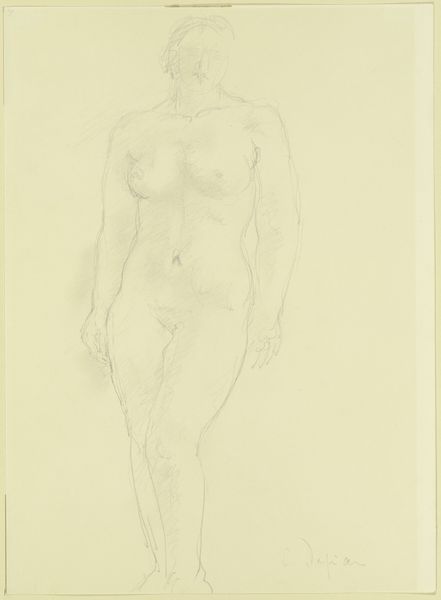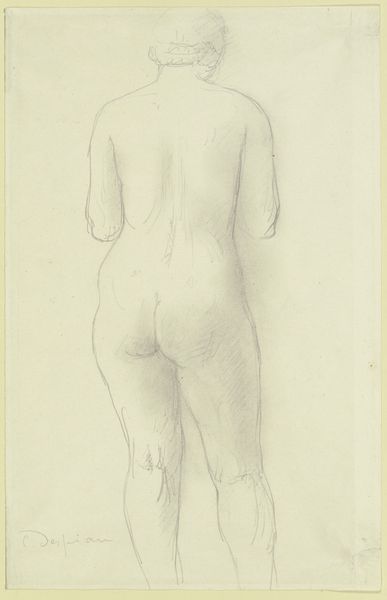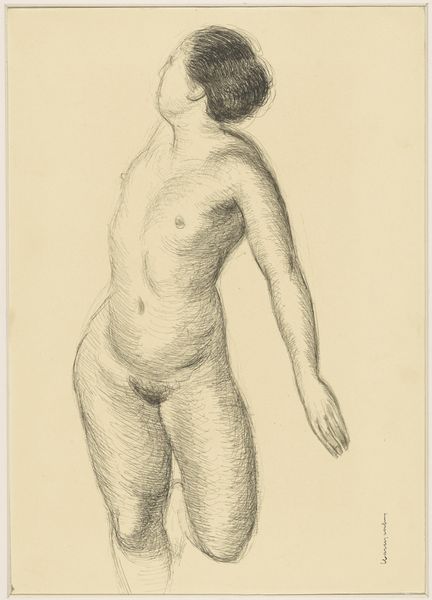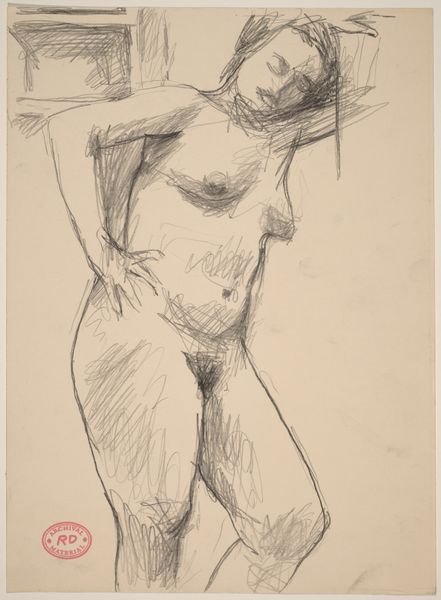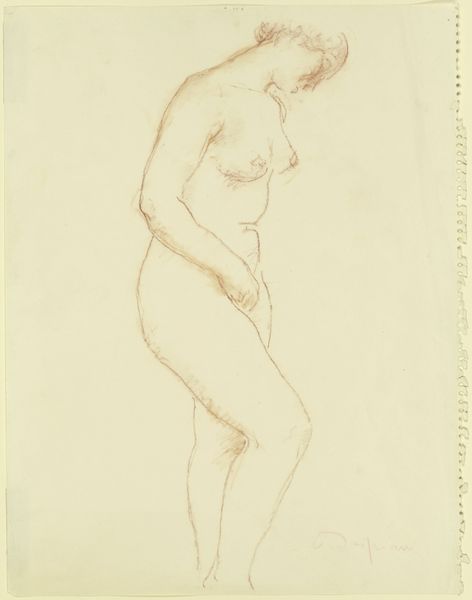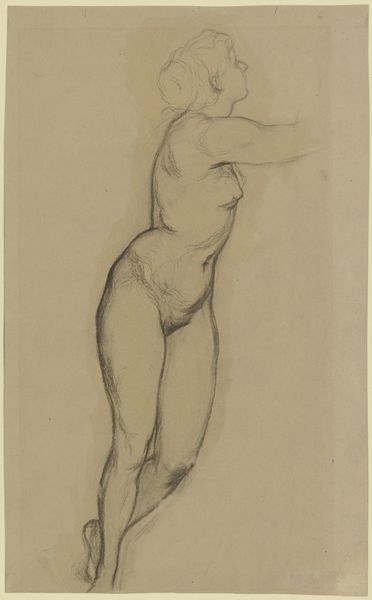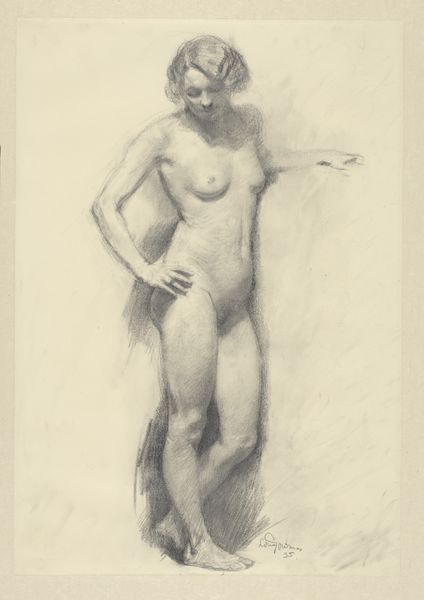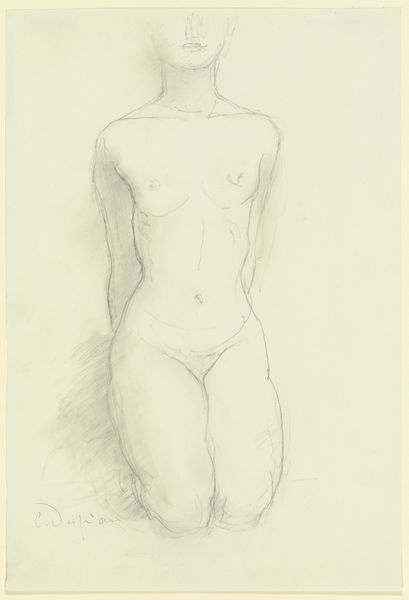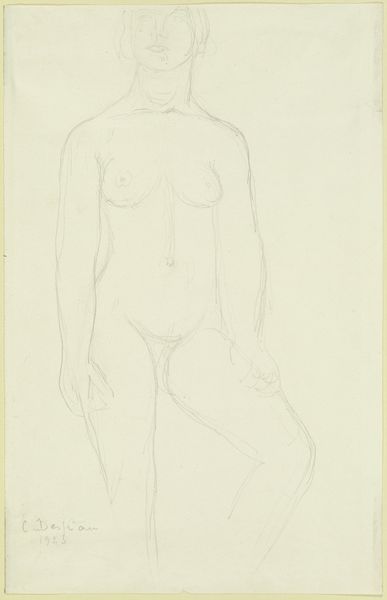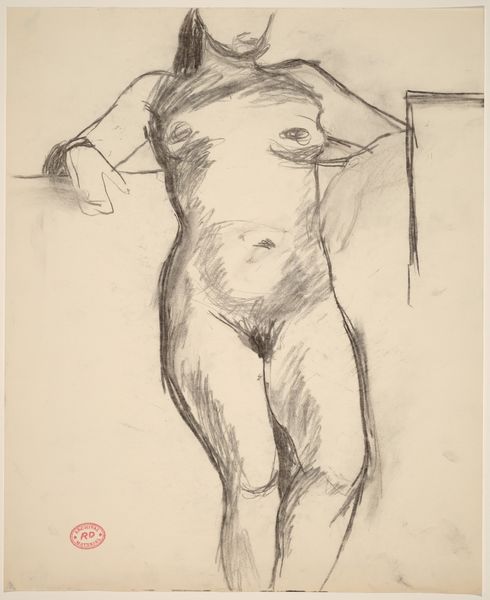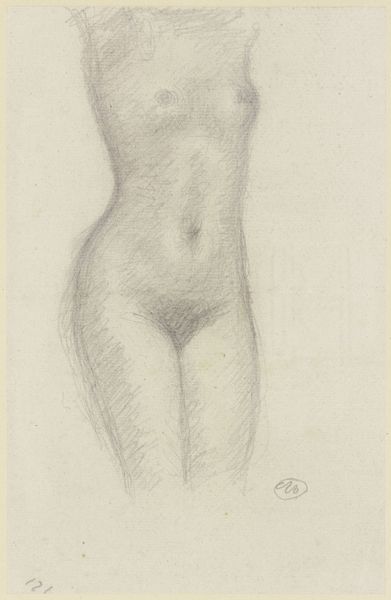
drawing, paper, pencil
#
pencil drawn
#
drawing
#
figuration
#
paper
#
pencil drawing
#
pencil
#
academic-art
#
nude
#
realism
Copyright: Public Domain
Editor: This is Richard Martin Werner’s "Female Nude" from 1930, a delicate pencil drawing on paper. It's interesting how the artist uses these very subtle lines to create form. What symbolic reading might you offer? Curator: I notice first how the artist deliberately avoids idealizing the female form, as perhaps informed by academic-art style. Yet the careful shading, especially around the figure's core, evokes fertility symbols throughout various cultures. Does it call to mind, for you, any ancient goddesses or cultural archetypes of womanhood? Editor: I see what you mean. There’s a sense of vulnerability, yet also power. Is that intentional? Curator: The gaze is averted. The drawing is, perhaps, tapping into a tension that stretches from ancient devotional images to early photography: The line between respectful admiration and objectification. I also wonder about the cultural associations surrounding nudes produced during that time period – do you find traces of it? Editor: Thinking about the era, it reminds me of discussions around female representation during the interwar period, exploring liberation but also grappling with traditional views. The drawing might be echoing that conflict, that negotiation of identity. Curator: Precisely. So we have both personal vulnerability and social positioning intersecting. Consider the use of pencil – a common, unassuming material. Its very modesty contrasts with the historical grandiosity of nude portraits, creating, for the viewer, a sense of intimacy and immediacy. How does this reading resonate with you now? Editor: I find that insightful! Looking closer, that reading makes the piece so much more complex than a simple figure study. I see so much symbolic intention beyond mere realism now. Curator: And so the image invites continuous conversations between eras and across contexts.
Comments
No comments
Be the first to comment and join the conversation on the ultimate creative platform.
